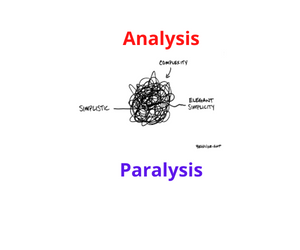What’s the cost? Last week, I offered some thoughts on being clear what are true benefits when you have an idea costs. To set the frame of reference, let’s think about an airline. If you can sell all the seats at full price, then happy days. Now imagine that once that is not the case and it is now one day before the flight. You have 5 tickets left out of 95. Should you try to sell them at face value and risk not selling any? You might be tempted to have some sympathy for those who have paid full price. Knowing that once the plane takes off, the moment to earn more revenue is gone, a rational mind would say that any revenue is worth having.
Now let’s move the setting from the real world and rational minds to the world of banking. Imagine that you work in one of those large shops in the Transaction Services business. You have clients, other banks or brokers, who use you as a local market custodian. You are one of many users of the bank’s core custody platform. Relative to the domestic side of the business, your businesses assets under custody are $10B vs. the $90B that the rest of the bank has. You have the chance of winning a new client mandate. The client has $5B in assets. That would make a big difference to your Assets under Custody (AuC). The client also settles about 4’000 trades a month, compared to the 10’000 your clients already do and the 90’000 a month the rest of the bank does. The potential client has asked you to price a service. There are two key prices that matter in the RFP from the client: the price per ticket to be settled, normally a flat rate per ticket and the custody fee, normally expressed as a number of basis points (1/100th of one per cent) that is charged on the value of those assets. The first charge is to cover the costs of doing something, buying and selling, and the second to cover the costs of doing nothing, from actually just holding the assets. This is important because even a client buys and holds you have costs to recover; they will want statements, you the bank will pay externally for “parking” those assets in the parking lot of the Central Securities Depository (CSD), even if it is digital. So now inside the Transaction Services business you have to make a price. You look at your own costs. Almost certainly, you too have costs allocated to you internally for exactly the same things. Tickets and assets. You know you will have to offer the client an attractive rate. Your costs have two components; direct costs and allocated costs. If for a client you settle a buy trade, money goes out the door. The assets bought go up too and that drives some more costs. Those are what are called the marginal costs. The other costs, the ones allocated to you are fixed costs. last week, looking at benefits when calculating cost savings, we noted that the number of HR people stays constant even if you let people go. Well, so it goes the other way too. There are no more HR people if you add business. Unless your client has some Mongolian equities and that is a whole new market for you, there are probably no more operations people needed. If assets go up from 100B to 105B, there is no more support needed to process coupons and dividends either. These are all fixed costs. Marginal and fixed costs together are often referred to as full-loaded cost. In setting the price, you must recover marginal costs. There might be an exception if there were revenues elsewhere, but let us leave aside the world of cross-subsidies. The fixed costs do not need to be recovered in the short-term. If you win the business, the fixed-costs per trade or per asset for custody go down for everybody. If you don’t win, they stay the same. You are in the same position as the airline with its plane ready to take off. What needs to happen is a sensible conversation between your business and the rest of the bank on how much of the fully-loaded cost needs to be recovered.
Sensible conversation. When it comes to cost allocations, that is a term as alien to the world of banks as the term good-value-for-money is to football players’ wages in the Premier League or gun boat diplomacy is to the Swiss military. As a rule, costs are allocated based on Napoleonic Law; you are guilty until proven innocent. Once you have them, if you think they are unjust, shifting costs away is a Herculean task. The domestic bank will be only too happy to insist on charging the fully loaded cost. More likely than not, they will want to apply the cost agreed under the last Service Level Agreement (SLA) and not even allow for the fact that with greater volume the average price should come down.
In days at Credit Suisse, I worked for one of these transaction businesses. We set up a new product settling FX trades, both for the investment bank’s own high volume business and for third party clients. FX is all about debits and credits. We were adding maybe 15’000 trades a day, which made 30’000 ledger entries. The Payments IT team, from the domestic side of the bank, told us to send the activity in a certain file format via a certain internal route so things posted to the ledger. Not too difficult. Internal, point A to point B inside the bank, probably just form side of the computer room to the other. Months after we had started the folks running the SWIFT Network, which included all the payment infrastructure, called us up and announced “You must pay for ze 30’‘000 messages per day you zend over zee SWEEFT network ja” and proceeded to quote me some amount of money that was something like 25 % of the amount we had agreed as a ticket price. I could tell there was a certain amount of glee involved here; the domestic bank had found a stick to beat the investment bank with. I told my colleague that our ledger entries may well have been in SWIFT format, but were not going outside the bank, rather we were just moving them between two different computers and a domestic bank IT person had told us to use this format and this delivery route. “Nein, you are using ze SWEEFT pipes. Ve are storing all ze messages in ze archive and giving you all ze functionality of ze archive. You must pay ze same as if you zent ze instruction outside ze bank.” I tried to argue that not only did we did not need all these added extras, we were not even aware of them. This was a horrible argument and enough to turn you paranoid; had the IT guys seen us coming and done a favour for the domestic bank? I think we managed to negotiate some kind of reduction, but the experience was a horrible one.
Lessons Learned: When pricing new business, the laws of economics apply in even measure in both banks and other industries. Marginal costs need to be covered . Recovery of fixed costs needs to be done sensibly; too rigid allocation of fully loaded cost will result in your not winning new business and nobody will be better off. There is a more narrow lesson from the experience of dealing with internal services; be really sure you know the costs you will be allocated.
Share on:



